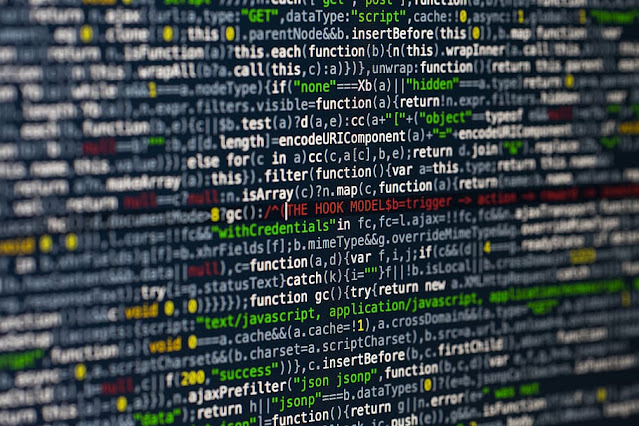
(Picture mostly unrelated)
It seems that most people, other than those specifically focused on photography, are using their phone as their “Primary Camera”. Beyond the feel, which some are currently working on solving, there is the functionality that camera’s have which phones just cannot mimic.
Regardless of the reasoning, if you are interested in buying a camera and you are not intending on spending the equivalent to a mortgage payment, here are some of my opinions and available options you may not have considered. Whether this is for social media or other types of production, there is a huge amount of selection that is difficult to navigate and compare —which is likely why gear videos are so popular on YouTube these days.
Everyone is looking to spend the least but still be able to produce high quality content.
——
The current prices of the Fujifilm line have gone out of control (fairly recently), where cameras that were recently $250 to $600 have skyrocketed to $600 - $2500 based on popularity and lens selection. (Particularly the Fuji X system) If you are into the camera world, you likely have seen the rise in the Fuji camera’s and other compacts with viewfinders that, in whatever myriad of ways, mimic the Leica brand or have a similar form factor. Some, like Cannon, are actually developing in their area now with full frame offerings. If you are thinking of buying a camera right now, I would suggest waiting a bit, or if you must, buying a lower end camera that can get you buy for the moment, as camera prices are currently falling more than many in the area would like to speak about. While this is likely do to a drop in consumer pricing, I would predict these prices will continue to fall for the foreseeable future, at least into next year. Not to mention, used gear is very much the way to go now if you are not in the high-end professional space, and even if you are, perhaps.
——
Now you certainly are not going to get the level of detail as a Nikon Z9 with a common 10 year old camera, even a pro-body, but based on the compression of images on social media that is likely not as big a problem as your mind may make it out to be. For those just getting started, looking to do their own advertising or video media, or hobbyists: there exist a large selection just based on how fast the industry moves and how many previous pro-models exist on the used market.
I have a few reasons why I think this is true:
- You are not (as previously mentioned) going to have an issue with quality, most of the cameras in the last two decades can produce good to great work, particularly when we are speaking of lower priced (older) pro-gear.
- You can fix everything in post: While you may not get great results out of camera, that are perfect, with AI noise reduction, Lightroom, Photoshop and other modern editing software and techniques —that is a fairly easy fix.
- The older glass available, due to the rise of mirrorless, gives you a look you would likely be trying to replicate in post, out-of-camera —diverging from the more sterile look of images coming from newer cameras and sensor technology.
I am not going to go through all the options, go to DP Review (if it still exists) if that is what you are looking for, I am just going to speak about what I have looked at, purchased and why —you can make your decisions from that. Now keep in mind, I am working on a production company and need more cheap functional cameras than most, but I think if you are in the market for only one, these same reasonings for use-cases will apply to you at some level as well.
——
Organized from Low End - High-end (more-or-less): I have organized these choices from price to more pro function,
DSLR’s:
Cannon:
Cannon 50D — all around, tough, smaller capable camera for a small budget. Does video and has newer features, great color replication, look and capability for the cost — roughly $60-$80 at the time of writing, with a lens for $80-$120 depending on the lens, but kit lens from this series are pretty capable.
Cannon 550D — Good Low light but not “weather sealed”, not a pro-body.
Cannon 7D — all around, low budget, pro-body, good low light potential for the age of the camera, sensors 1.6 cropped, but fast camera with good video potential (Avengers and others have been filmed on it). $150-$250
Cannon 7D Mark II — sharper all around than the 7D, fast, good auto focus, about $300-$400 at the time of writing. $300-500
Cannon 5D — Full Frame portrait camera, slow but great images, good if you are switching from film to digital, faster relatively. Great image quality, excellent in everyday situations, not as much in low light but useable with skill. $150-$250
Cannon 5D Mark II — Full Frame (More Modern), fast for the time but not fast by modern standards, great image quality, good lowlight performance for these sensors, really tough camera, pro-body and weather sealed like the other full frame cannons of this era. $250-$300
Cannon 5D Mark III — Basically a better Mark II, better video and low light, a bit faster, more at the range of the 7D with full frame quality and editing options. $500-$1200.
Nikon:
Nikon D700 - Pro model, great in low light, fast, tough camera. Older but still very capable. Other than the portrait color science I would put it above the Cannon Cameras for the year, which is tougher would probably fall to the cannons, nearly, but you will still get 500,000 to 1mil shutter count on these rigs. $250-$500
Nikon D7100 — Great sensor for low light, fast and small form factor Nikon for a pro-model. Not as good of lens selection as Cannon, but you shouldn’t worry about that anyway. $200-$500
Nikon D3 - Great camera, great sensor, low light and for speed, not huge amount of megapixel count, but doesn’t matter, great images. Super strong, $250-$350
Mirrorless:
Mirrorless is still somewhat expensive, but there are some reasonable options to consider if you are looking for a capable compact. I have had the Sony A6000 - a6400, love those cameras —and I have tried the Cannon M50, great camera. I, personally, own the RX1R II, purchased before the prices went up, not sure if it is worth it for the average person, but it is great to travel with (but buy lots of batteries). Lenses for the RX1R are more expensive if you do not have other Sony Cameras, perhaps better to go with one of the FujiFilm fixed lens cameras or others in the X series.
Cannon M50 - Great camera, small form factor, expensive, great quality, a bit sterile and over sharp.
Sony a6000 - a6600, great cameras, not weather sealed other than the a6600 (I believe) but pretty rugged for the build. Good option for traveling and occasional use. $250 - $600
——
Not going to get into the micro four thirds selections, you will have to take that task on yourself, just not my world, but I will link some of those with reviews that shoot these more regularly.
Sony
RX1R II
https://www.sony.com/za/electronics/cyber-shot-compact-cameras/dsc-rx1rm2
RX1R II Professional Compact Camera with 35mm Sensor | DSC-RX1RM2 | Sony South Africa
Lets contextualize a few things:
- I am only really speaking to photo people here, and perhaps people that work with occasional video —as that is less my area, you will want to look up some of those specific articles/videos that are speaking specifically to “video people”, who are certainly a different bread. However, you will likely find at least the 5D Mark II and 50D as suitable choices for video as well.
- All of these are not going to give you the quality and dynamic range of “modern cameras”, but you should know that already. What they will provide you is work equal to that of professional work 10 years ago, which I would say, looking back, holds up.
- Most of these prices will likely stay about the same or go down, but in the short term these bodies/lens will hold their value quite well.
----














.jpg)




